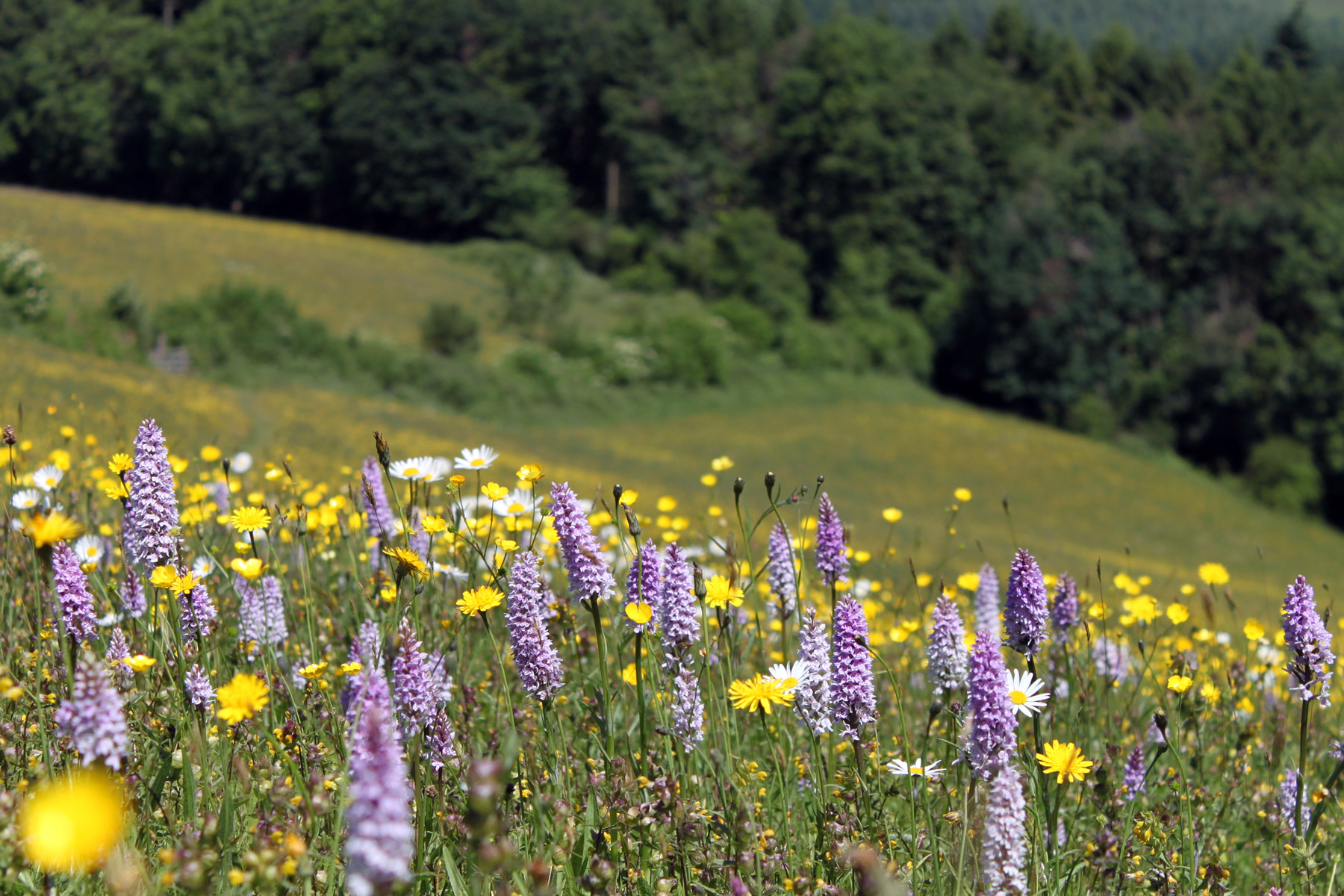Thanks to everyone who joined us this week to see the progress of meadow restoration one year on. Many thanks to Hilary Hillier who kindly showed us around her lovely meadows at Bythan, and particularly the meadow she enhanced a year ago with seed from Plantlife’s Joan’s Hill reserve as part of the 2019 NRN pilot . It was great to see the meadow a year on and hear how Hilary did the restoration work.
We started by looking at an older meadow and orchard which was restored in 2004 with green hay from near Malvern. Here we found lots of meadow vetchling, common vetch, red clover and knapweed, as well as Black Medick, which is a member of the pea family. It has a mucronate tip on the leaves, plus it is “downy”, which can help identify it in its vegetative state. Its seeds are characteristic as well if seen at the right time of year. If you are new to plant ID or need some help identifying these plants, have a look at our Survey and Monitoring page and Stuart’s Problem Pairs.

Hilary told us how she manages her meadows during the summer months, and particularly highlighted how there’s a pinch point, where all of her diverse meadows are in flower. Therefore, she has left a few fields for the grazier during this period. We also heard about two fields restored in 2011 with large bales of green hay from nearby Stocking Meadows Wildlife Trust and spread with a straw chopper. The importance of timing when using the green hay method was discussed as well as stocking density and management during the first autumn and winter after restoration – see our Restoration Plan
This visit very much emphasised the long-term nature of restoration, with many herb species clearly visible in the 16 year old meadows and fewer species noted as we progressed through to the most recently restored field. Therefore, patience is needed together with appropriate management, which was brilliantly explained by Hilary.
Below are some images of the methods which Hilary used in August 2019 which might be useful to those of you wanting to achieve something similar. For tailored advice for your meadow please contact our advisory service
 Left: Power harrowing once – not 50% bare ground required.
Left: Power harrowing once – not 50% bare ground required.
Right: Power harrowing twice >50 % bare ground perfect for good soil-seed contact and to set the grass back enough
Left: Adjusting the power harrow to shallow (3cm) depth
Right: Broadcasting brush harvested seed by hand
Hilary is keeping records including of seedlings as they emerge, and each summer she is also using a rapid plant monitoring method and bumblebee survey to assess the progress of this wonderful restoration work.
 Clover, ribwort plantain, common daisy, mouse ear chickweed, common sorrel seedlings
Clover, ribwort plantain, common daisy, mouse ear chickweed, common sorrel seedlings




